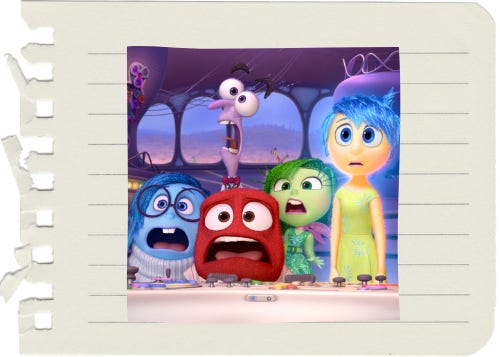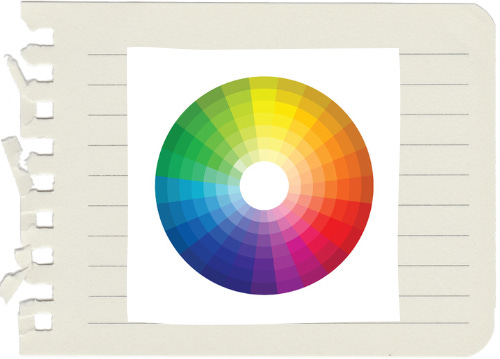Here’s how to understand yourself better
How well do you know yourself? I mean, really, know yourself.
If you’re like most of us, you’ve probably still got plenty learn about who you are. Sometimes you may feel coherently together and at other times you might feel like a contradictory mess.
That’s not surprising. In fact, as a psychologist, I can say - that’s totally normal.
We’re all inherently interesting, rather complicated, in fact, very complex, not at all straight forward, human beings.
This has always been the case. Good old, Walt Whitman, back in the day, said it ever so eloquently:
Do I contradict myself? / Very well then I contradict myself, / (I am large, I contain multitudes.)”
Because we do. We contain multitudes. And this is the secret to understanding ourselves better.
What I’m about to share with you is not known by enough people. It would be my wish that every single person on this planet could download this info as an operating system update. Plug in for a minute and transform your sense of who you are.
If that happened the world would be a much better place.
I know that’s a big call. But stick with me and you’ll, hopefully, understand why I’m making such a bold claim.
Let’s begin by dealing with any sceptical parts of you. What I’m about to share is a psychological evidence based approach to self-understanding and healing.
It’s the approach I used in my psychology private practice with clients and it’s how I’ve come to know myself better too.
(If you ever want to know more about the background to what I’m about to share, hit up me in the comments or email me at jodiebenveniste@substack.com and I’ll share more).
But for now, let’s proceed…here’s what you need to know.
Have you ever been in two minds about something? As though, there’s a part of you that really wants to do something new but another part that’s worried?
Or a part that wants to go out but another part that wants to stay home? Or a part that wants to show your writing to someone but another part that is too scared?
I’m going to assume that you’re like most people and this has, in fact, happened to you.
There’s a good reason for that. As Walt Whitman so poetically said, “I am large, I contain multitudes.”
You, me, every one of us, contain multitudes.
We are not one single, unitary personality. We contain many parts.
Pixar, in their movie, Inside Out, explained it pretty well. Riley, the protagonist, has five key parts - anger, sadness, disgust, fear and joy - that are personified as characters within her.
At various times, a character or part takes over her system and Riley experiences the corresponding emotion very strongly.
For example, a young Riley is told by her dad that she can’t have any ice cream until she finishes her broccoli and her angry part fires up, leading to an outburst.
That’s true to form. That’s what happens to all of us too.
(I don’t mean we all have angry outbursts when we’re told we can’t have ice cream if we don’t eat our broccoli. I mean that if a part fires up within us, we’ll experience it and, most likely, those around us will experience it too).
This is the point: We all have different parts of us that hold different emotions, beliefs and behaviours. At various times, these parts take over our system and flood us with those emotions, beliefs and behaviours.
(Side note: Most of us have more than five parts. We, in fact, have many, many parts. But for the sake of an animated movie, five parts is more manageable).
This is how it goes.
Feeling angry? Sure, that’s your angry part expressing itself.
Feeling self-critical? Yep, that’s your inner critic having its say.
Feeling overwhelmed. Of course, your overwhelmed part is freaking out.
Feeling anxious? Yes, that’s your anxious part getting activated.
I could go on but hopefully you get the picture.
We all have many parts within us, who are characters in our inner world. They hold certain emotions, beliefs and behaviours and they get activated at various times.
Here’s why this is important.
We need to distinguish between ourselves and our parts. (More about this in an upcoming post).
This is what I mean:
You’re not an angry person. You have a highly active angry part of you.
You’re not a critical person. You have a hard working inner critic.
You’re not an overwhelmed person. You have a part that gets easily overwhelmed.
You’re not an anxious person. You have an anxious part of you that’s working over time.
You contain multitudes, you have many parts. But you are not your parts. They are a part of you.
I know this might be getting a bit nuanced and I promise I will explain more in future posts.
But for now digest this.
You are not a single unitary personality
You contain many parts within you
These parts hold emotions, beliefs and behaviours
These parts get activated from time to time and when they do, they express these emotions beliefs and behaviours.
You are not a part. You are not an angry, critical, overwhelmed or anxious person.
You simply have highly active parts of you that are angry, critical, overwhelmed or anxious.
This self-understanding can help in so many ways.
Here’s a quick run down of how this is helpful:
Yes we are complex! Isn’t it a relief that it’s quite normal to feel contradictory? We’re not implicitly contradictory but we do have parts that hold contradictory views. It’s manageable! And sometimes, very helpful. (More about that in a future post).
Understanding that it’s a part of us that’s reacting means we can get some perspective. ‘Oh there’s a part of me that’s thinking, feeling, being angry.’
Knowing that everyone has parts means that we can understand other people better. ‘Oh, their angry part is taking over right now’. Again, more perspective.
Our characters also have parts! Once we unpack that, we can create even more amazing characters with extra depth and layers.
And most importantly, there are ways that we can work with our parts to help them to calm down, chill out, not take over our system. (More about that in a future post).
Right so there you have it: How to understand yourself better.
Really, this is only part 01 of this conversation. There is a lot more to say and explore, and we’ll be doing that over the coming weeks.
But for now, maybe you’d like to notice or say hello or give a shout out to one of your parts.
But wait!
I was about to sign off and say sayonara until next week. But then I realised I needed to share something else with you.
You see, I wrote a draft of this post and then, later, while cooking dinner, I had a part of me come up to say, “We’re not quite satisfied with the post, Jodie. I think you can make it better.”
Okay, I could deal with that. I’ll often write something, the idea will mature and deepen over time and I’ll rewrite and adjust. Not a problem.
But what also came up was a part who was worrying about this post. It was saying, “Jodie, I’m not sure people are going to like this. Maybe they won’t get it or maybe they’ll think it’s not very good. If they don’t like it, they won’t stay subscribed and you’ll end up here all alone, talking to yourself.”
Two parts, two different views. Neither of them are me. They are parts of me.
One, quite reasonably, was suggesting that I fine tune and the other was freaking out that I’d die a lonely, readerless, old writer.
What’s a girl to do?
Recognise them as parts. Realise they have concerns. Honour their point of view. Then from a place of perspective, decide what to do.
(I will be unpacking this process in future posts but for now, if you could just go with me, that would be great).
That’s what I did and this is what happened. You just witnessed it!
I fine tuned this post by sharing how these two parts with differing concerns showed up.
The part who thought we needed to improve the post is now satisfied because it believes that sharing what happened has made this post better. Great!
And the part that was freaking out that you’d all hate this? Well, it’s feeling a little calmer because I’ve recognised its fears and I’m looking after it.
If I didn’t realise they were parts, I could have got caught up in their stories, freaked out, maybe ditched this post and doubted the whole operation.
But whenever we’re creating anything from scratch, there are always going to be parts that doubt or worry or criticise or get overwhelmed.
That’s okay, we can look after them so they don’t hijack the whole shebang.
I promise, I’ll be writing more about this because there is so much to share! But for now, I will sign off and say sayonara!













